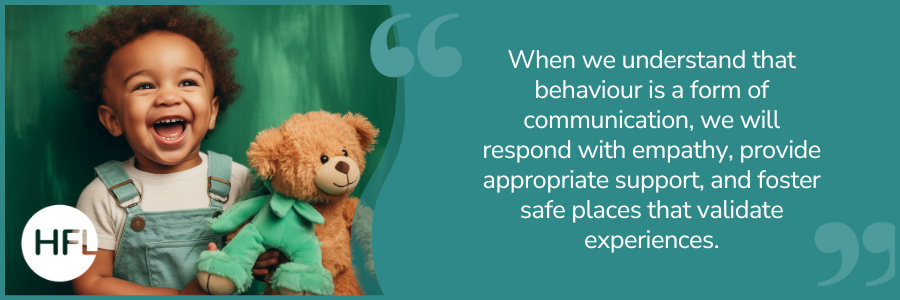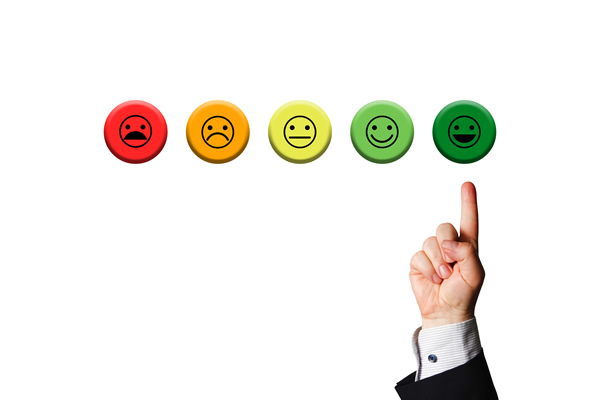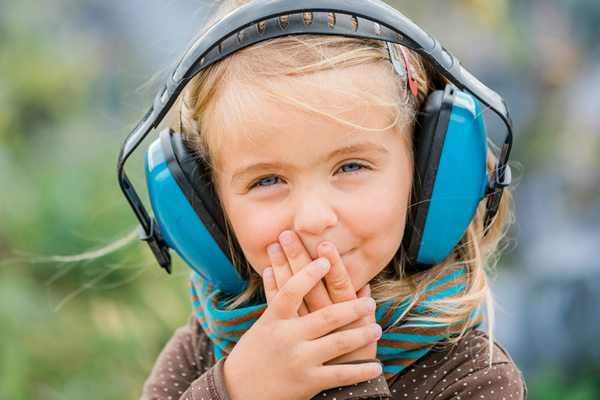
When you hear the words ‘safe space’ mentioned in the context of the EYFS setting, what immediately pops into your mind?

Many will think of providing a tent or similar space – one tall enough for a child to move around in and maybe even stand up. Perhaps with soft furnishings or familiar resources- their own private space.
In some circumstances, this may well be the case, however, for a child to feel ‘safe’ in their setting, it’s so much more than simply providing a physical space for them. Safe spaces and places should be everywhere that the child is learning. They encompass more than just physical safety; they encompass emotional security and nurture. A safe space in the EYFS classroom is an area or setting deliberately designed to offer children a sense of security, allowing them to explore, express themselves, take risks, and learn without fear of judgment or harm.
Before we begin, lets reflect on our own safe space and consider these questions: Where is your safe space? What do you do there? Why do you feel safe there? Who is there with you?

Children display a range of behaviours, therefore it’s vital for practitioners to be aware of the factors that may impact on children’s learning. If children do not feel safe, they will not explore and learn to interact. We know the learning environment is key to how effectively a child will learn.
The DfE document Mental Health for Early Years Children explains how:
“children’s emotions can cause them to display behaviours you find concerning. It is important for you to be curious about the causes of these behaviours and explore these with parents and carers. For most children, using different behavioural and emotional support strategies in your setting will be enough to secure their development. However, some children will need more support. This is why it is so important that we try to understand the cause of the behaviour and get advice where necessary”.
Language in the Safe Space
Be mindful about the language that you use when talking to, and about, the children in your setting. Language can be a powerful tool and when used carefully and mindfully can support children to self-regulate, make positive choices, and seek help when needed. Talking about the child whilst they are in ear shot, labels, definitions, and negative terms can be limiting or often even damaging. Lead by example by filling your safe setting with terms that promote growth, empathy and understanding.
Simple things to begin:
Temperature; Maslow’s Hierarchy of Needs tells us that when the temperature is too hot or too cold, we won’t be able to meet any higher-level needs (such as self-actualisation and learning). Instead, our brain will constantly urge our body to do something about our need for ‘thermal comfort’. As any practitioner will know, a constant low-lying level of interruption can have a profound effect on learning outcomes over time, so our teams having an awareness of this can make a huge difference.
Lighting and artificial light; A 2018 study published in the Journal of Educational Psychology, found that children in classrooms with high levels of artificial lighting had more difficulty concentrating, and lower academic achievement, compared to children in settings with natural lighting.
We all love a fairy light but do be cautious of the effect of flickering and flashing lights and how distracting this can be for some children and adults in the setting! Natural light is best, on sunny days turn off the lights and have a look at how behaviour changes. Soft, warm lighting can also create a calm feel to your setting.
Poor acoustics can create a negative learning environment for children. Kanakri et al, (2017) explain that some children with neurodevelopmental and neurodivergent conditions may find processing speech, in the presence of noise, challenging due to noise sensitivity.
“Children may become overwhelmed and physiologically stressed due to acute acoustic sensitivity which severely hinders sensory processing and correlates to repetitive and/or distressing behaviours”.
When practitioners are aware, and make reasonable adjustments to their provision, it improves the child’s chances to learn in the classroom alongside their peers. Rather than being taken out of provision to a more calm and quiet area.
What else can we do to promote inclusion within our safe spaces and awesome places?
Access to water throughout the day
How can drinking water improve children’s behaviour? Not only does drinking water ensure a healthy body and mind, but it can also directly be linked to self-regulation and improving a child’s ability to learn. Dehydration can cause children to be irritable and distracted. This can not only affect the child’s ability to learn but can also disrupt classes and provoke behaviour we may find challenging. Keeping children hydrated can help to reduce classroom disruption.
Do colourful classrooms and settings impact on children's mood and behaviour?
English Early Childhood Education and Care research shows that colour can affect all children differently with regards to their mood and behaviour. In particular, those who are sensitive towards colour or struggle with focus and concentration or their vision. Some children can become stressed by colour and patterns, and experience sensory or cognitive overload. The choice of colour surrounding them can affect their behaviour, therefore it is essential to create a warm, but not over-stimulating, environment.
The Safe Space, Zen Den, Calm Cave or Chill Out Zone
Having a designated place for children to go to manage and regulate emotions, can help with emotional well-being. A calm area will give the child time to be calm and encourages self-care, contributing overall to well-being. When big emotions are managed swiftly, children can go on to focus better on learning and participating in class alongside their peers.
Décor
The area should have minimal on display and natural or soft pastel colours should be used. Further sensory input will only heighten the situation. Clutter and bright colours may overstimulate and have an adverse effect on a child who is attempting to regulate their emotions. Make sure to have the child’s individual toolbox with personalised strategies to help them to be calm in the area.
Where?
The position of the safe space is extremely important. It must be accessible so that it can be used in the moment. Children will only rely on using the area instead of becoming physical or attempting to abscond and run from the threat if the safe place is available at times of dysregulation. Therefore, consider a central area, rather than trying to persuade the child to walk to the other end of the setting when the child is already in red zone; if it is accessible and in sight , the child will choose to use it independently.
Safe spaces can be set up anywhere, such as in the dining hall, or the inside and outside learning environment. Remember… children must be in sight and hearing of the adults.
A safe space for small children with big feelings
For some children, it can be easy to identify if they are feeling unsettled. However, this communication will look different for all children. For example, they may start to fidget, they may hide under a table or perhaps display certain behaviours. At this point, a trusted member of staff may be required; try to identify any triggers. If the child will not engage, give them a way out of the situation by offering two choices such as “outside or safe space”. Simple, clear instructions and offers of support may also be accompanied by visual cues in the setting. By providing a choice, children will feel as though they have a sense of control. In most cases, the child will choose to go into their own safe area.

Notice. Learn. Act.
Notice the symptoms: when a child is dysregulated, the parts of the brain concerned with speech and speech comprehension are inhibited, so it is not advisable to engage in a lengthy dialogue at this time. Adults supporting a child should use short, explicit statements with no room for misinterpretation. Follow your school’s behaviour policy and approach or script and check in with the team to ensure this is happening consistently and by everyone.

The 5 -point scale can help; it can be used to help children become aware of emotions such as anxiety or anger and can show the stage or level of the emotion as a number or image in the moment. This enables the child to show how they are feeling rather than trying to use words to describe or name the emotion. The 5-point scale will also give time for the adult to come alongside the child to offer strategies before behaviour escalates.
Communicating feelings
If able, ask the child to use a word to describe their feelings, use the feelings thermometer image or the language of self-regulation to describe the intensity of those feelings.
Learn strategies to help to calm down
Teach tactics and have a toolkit full of strategies in the ‘regulation station’ to help. For example: if they’re feeling tired or sad, they might try having a stretch, a drink of water, or talking to someone may do the trick.
Implement calming strategies
This is not an easy task, and it takes lots of time and patience. First, work on how to self-soothe the smaller upsets when the child is worried or anxious, and as they get better at that, they might be able to tackle anger. Until they can, they’ll need consistent support from the adults to help with this.
Understand what triggers their big feelings and take steps to avoid problems from occurring when possible. Practice self-care strategies to stay calm when tough things happen. Many of us adults are still learning how to manage this!
How do I use a personal, separate safe space?
There is no clear way of using the area and the approach to using this space will differ from child to child. Let the child know when to use it, and to understand the cues that might indicate that they need to take a break. Encourage the child to choose the safe space to regulate and then return to the activity when they feel ready.

Mindfulness matters
Do you teach and practice mindfulness every day?
The Mindful organisation believes mindfulness for children will increase optimism and happiness in classrooms. “When used consistently, it decreases bullying and aggression and will increase compassion and empathy for others. It can also help children to resolve conflicts”. Studies show that the benefits of mindfulness for children may include decreased levels of stress- decreased depression, anxiety, and disruptive behaviour in children.
Mindfulness can be practiced in the moment and during any time of the day. Honestly, the children in my nursery looked forward to it and used many strategies spontaneously such as feather breathing, inhaling for a count of four, then holding their breath for a count of four and exhaling slowly through the nose. This and other methods such as the Magic Clap which was fun and distracted from the situation; by clapping hands together and really focussing on the magic tingles afterwards worked wonders and could be implemented independently in the moment with excellent results! www.mindful.org/mindfulness-for-kids
I have also used positive affirmations as children entered the setting in the morning and at particular times throughout the day. Daily affirmations are positive statements that help boost self-esteem, confidence, and improve motivation. Some of the children’s favourite phrases were.
I am brave,
I am strong,
I am loved,
I am awesome,
I am smart.
When I feel safe, I can learn.

The same can be said for us, we thrive in a nurturing culture, based on kindness, mutual interests, and respect. This climate does not happen magically, it must be cultivated through a whole school or setting approach that shares consistent strategies and high expectations. A safe and supportive culture will reflect shared values and include robust behaviour management practices that all practitioners believe in and promote.
Feeling safe and valued is vital to a child’s development, it is their right!
Learning suffers when children fear for their safety or sense their adults have low expectations for their achievement. In a healthy, supportive climate, children are engaged and take intellectual risks.
The Thomas Fordham Institute seconds this and writes,
“Such a community is characterised by positive relationships between teachers and students, a place where genuine respect is the norm, and where all students feel they belong.”
If you would like to find out more about creating a safe space in your setting, contact Maria Griffin or look out for the new webinar Safe Spaces & Awesome Spaces COMING SOON!


